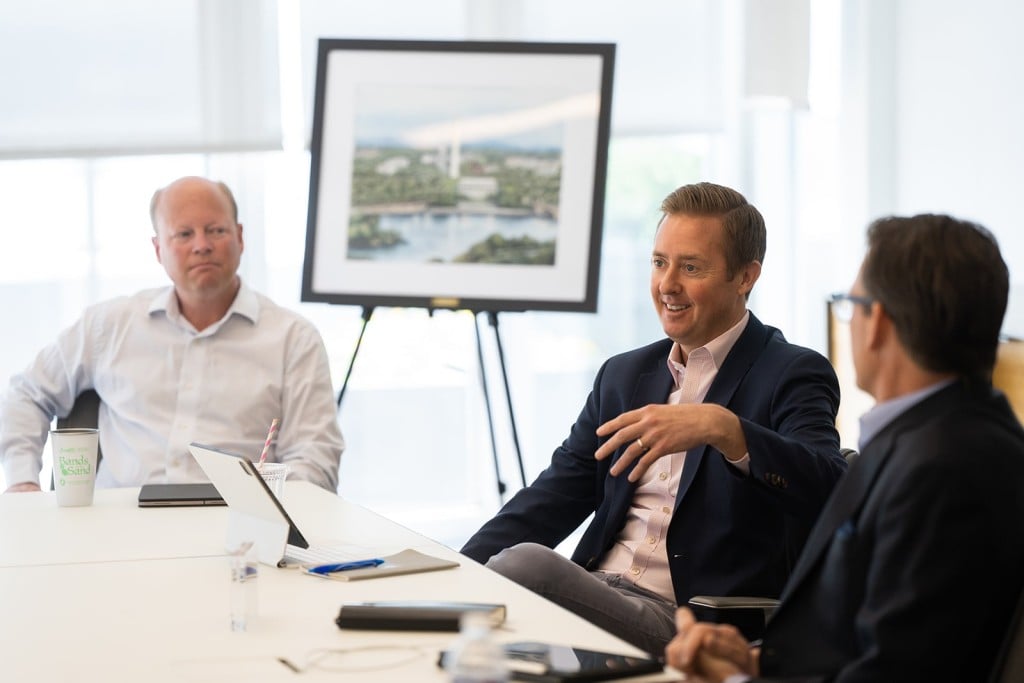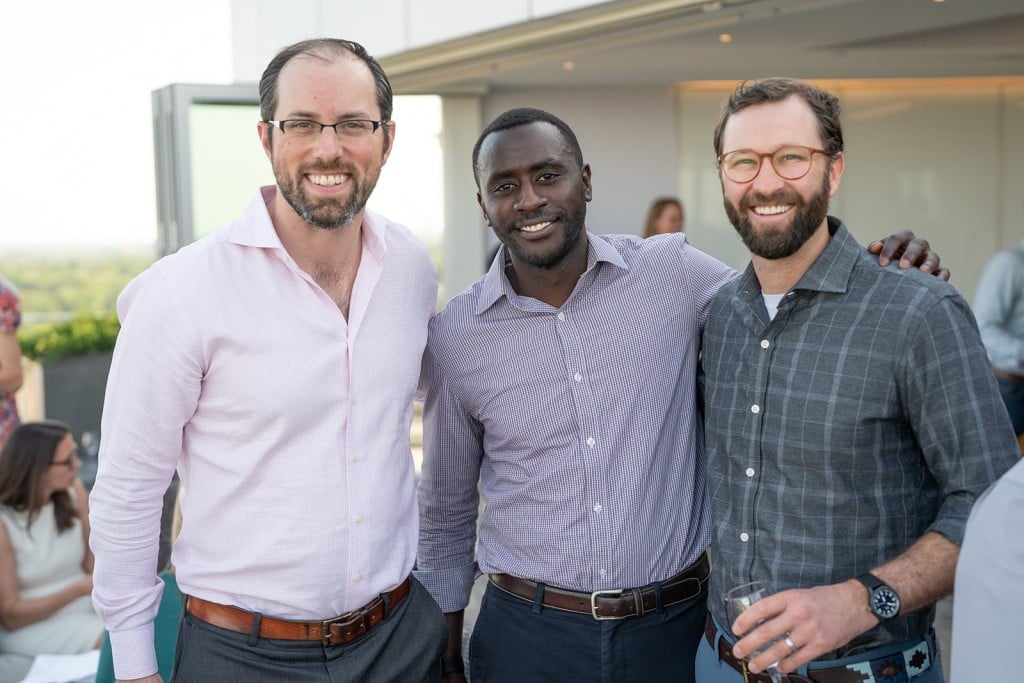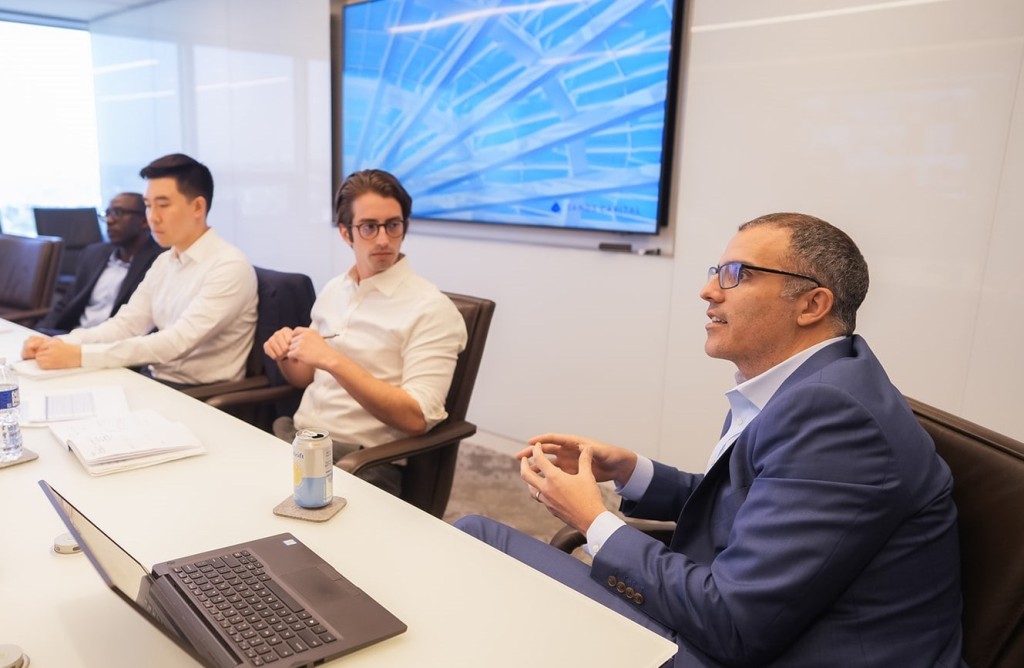Related Articles
Changing market and geopolitical environments are part of the equation for long-term investors. As human beings we hope for peace, economic certainty, and public safety, but as active investors, we are prepared to manage through trying times.
Key Points
- As is typical during periods of disruption, many investors shorten their focus, see only alarmist headlines, and sell anything considered risky, which can often include long-duration growth assets.
- Change creates uncertainty, distortion, doubt, and extreme volatility in financial markets, but it also unleashes countless opportunities for many of the companies we own and for those businesses that are still emerging.
- We believe that the best businesses with the strongest fundamentals have been able to take advantage of this downturn to fortify their competitive positions.
It’s been a difficult year. Rising interest rates, fears of recession, geopolitical conflict, and the outbreak of war between Israel and Hamas have collided to pressure equities. As is typical during periods of disruption, many investors shorten their focus, see only alarmist headlines, and sell anything considered risky, which can often include long-duration growth assets. During this challenging time, we have been fortunate to connect with many clients, consultants, and prospective investors, including at recent multi-investor events, to discuss what matters most, now and going forward.
Firstly, we have been here before. Changing market and geopolitical environments are just part of the equation for long-term investors. As human beings we hope for peace, economic certainty, and public safety, but as active investors, we are prepared to manage through trying times as we have during periods of war, economic decline, and pandemic over the past 30 years. The only constant is that change is inevitable.
While change creates uncertainty, distortion, doubt, and extreme volatility in financial markets, it also unleashes countless opportunities for many of the companies we own and for those businesses that are still emerging. If we can successfully identify and own the businesses that disproportionately benefit from those changes or—even better—create those changes, we should be able to uncover opportunities for wealth creation over the long term.
Innovation Matters
Throughout history, change has inspired and often forced innovation. Businesses lost little time adapting to new consumer needs during the coronavirus pandemic. Today, we see more innovation happening than ever before. As investors in long-term growth businesses, we believe that companies that are driving real value-added innovation can create wealth for consumers, society, and investors.
For instance, as the dust settles after a few rocky post-pandemic years, we are witnessing the emergence of a pattern that we have experienced following past periods of disruption. What we believe to be the best businesses with the strongest fundamentals are emerging stronger and with consolidated competitive positions in their respective market categories. These businesses are improving their free cash flow and profitability profiles. In select businesses, we are now seeing some of the most compelling valuations of the past decade, creating a prime entry point for investors and a strong case for active growth investing.
Long-term Focus Matters
Undoubtedly active management has come under fire during the last years of market turmoil, and investors are questioning its utility. Indeed, it has been a challenging time for us and other active managers.
However, we believe that our approach to active management works over the long term. That being said, getting to the long term will not always be a smooth journey. As we have recently experienced, volatility may reign supreme when the collision of changes—pandemic, inflation, interest rate increases, technological disruption, and geopolitical tensions—creates distortion and sows doubt. However, we believe, and our numbers support, that the long-term gains outweigh the short-term pain. In other words, we believe the rewards will be worth the wait. Over the past 30-plus years, if we look to the results of our longest-running strategy, we see that significant drawdowns have typically been followed by long periods of excess returns. (See Exhibit 1)
SELECT GROWTH HAS TYPICALLY OUTPERFORMED FOLLOWING ITS ALL-TIME WORST DRAWDOWNS
10 Worst Peak-to-Trough Drawdowns
When mired in doubt and uncertainty, it’s difficult for investors and business owners to believe the best is yet to come. We have come to call the pattern of capacity building and adjusting during and after the pandemic the bullwhip effect. (See Exhibit 2)
Many businesses, especially those that were digitally oriented, experienced spikes in demand at the beginning of the pandemic. Shortages lead to stockpiling of everything from toilet paper to semiconductors. These temporary dynamics obscured the long-term fundamentals for many businesses. Sales and profits grew faster than expected as businesses moved to hire staff and increase capacity. Recall how consumers rushed to buy technology enabling them to work from home. Many companies used these windfall profits to reinvest in their businesses, expand their capacity, and take market share from competitors.
And then society opened, and the elevated demand began to subside, normalizing as consumers and businesses returned to work, the gym, the grocery store, and to a lesser extent the mall. This proved to be challenging, as demand peaked but investment levels remained elevated, weighing on margins and near-term profitability. Investors increasingly called into question whether certain growth businesses were flashes in the pan, or merely navigating a reset. Instead of taking the time to discern the difference, the fastest Federal Reserve interest-rate hiking cycle in over 40 years caused investors to simply dump high valuation equities without regard for the potential profitability certain companies were well positioned to achieve. However, we believe that while many businesses were investing for the present, leaders were positioning for the future. They were essentially sowing the seeds for future growth, innovation, and profitability in a world that would eventually return to normal.
As an active manager in innovative growth companies, we are well aware of how sensitive valuations of high-growth stocks are to changes in macroeconomic conditions and are willing to accept the resultant short-term share price volatility in exchange for potential long-term wealth creation. For sure the meteoric rise to a nearly two-decade high for 10-year U.S. Treasury yields spooked investors, who worried how a rising cost of capital would affect the ability of companies to fund future growth. But in adhering to our six criteria, we are able to look right past that short-term news.
THE BULLWHIP: HOW THESE CHALLENGES HAVE AFFECTED MANY GROWTH BUSINESSES
We don’t invest in companies that borrow their way to growth. We invest in financially strong companies with category leadership, strong unit economics, and pricing power. These characteristics often enable them to go on the offensive and use adversities created by downturns and panics to their advantage. Two examples in recent years include the shake-up in U.S. food delivery and Brazilian ecommerce markets. We have seen many of our companies expand their market share, make selective acquisitions to consolidate a market, innovate to find new ways to add value for their customers, and benefit from more favorable terms with suppliers and/or lease agreements when they are able to continue to invest in growth while competitors are not. Financial strength is also critical for companies to not just survive but to thrive coming out of downturns because when rates rise, as they have just done, access to capital can completely dry up, especially for small- and medium-sized enterprises.
Over time, as the dust cleared, industries rationalized from these Wild West phases, and the long-term promise and the dominance of leading companies shone through more than ever. Leaders emerged and strengthened their competitive moats. Ecosystems and chokepoints began to shift. Companies that had intentionally delayed profitability to bolster competitiveness are beginning to demonstrate the power of their unit economics, allaying fears that these businesses were incapable of ever making money. Importantly, for many of the previously unprofitable businesses that we own, they are improving their margins while still growing faster than the overall market. For them, as we expected, profitability was more of a choice than a hope.
In the past year, we have seen how this bullwhip pattern has separated the contributors from the detractors. Businesses that have been able to normalize operating expenses, absorb excess supply, and balance their workforces have in many instances performed well, while companies still burdened by pandemic-induced spending and hiring patterns have been among our top detractors.
Overall this rationalization phase has favored those companies with highly demanded products and services and strong operating leverage and unit economics
Growth Matters
Fortunately, we are well positioned for these periods when investors stop gawking at the short term and focus returns to fundamentals.
At Sands Capital, our goal is to outperform our benchmarks over rolling long-term periods. To do so, we believe we must own companies with durable, above-average earnings growth, since earnings growth is the primary driver of stock returns over the long run.
While price-to-earnings multiples can help or hurt in any given year or environment, over the long run fundamentals tend to drive the bulk of the market’s —and our—results.
However, not all growth is created equally. To that end, we are exclusively focused on identifying secular growth opportunities with companies that have competitive advantages that we believe can achieve sustainable growth. To do so, it is more important than ever to be true to our research process and ruthless with our investment criteria.
Conviction Matters
The recent sell-off has presented us with an opportunity to increase positions in our highest conviction names. We have seen equity markets that tend to bottom before economic cycles, providing potentially good entry points for investors who can look past the panic and toward the future.
And to us, it appears that many of our businesses are well-positioned to move into a future in which investors are more skeptical of valuations, earnings, and end markets. We believe the fundamental outlook of these businesses is strong, and in many cases, stronger than it was before the disruptive phases and sell-offs of the past three years.
As we’ve seen following previous bear markets, businesses with strong fundamentals will likely lead the way higher. As active managers, our job is to use the market’s indiscriminate selling as an opportunity to identify high-quality assets at discounts to their long-term value.
Change Creates Opportunity
We began this article by asserting that change creates opportunity. We believe that is a constant. Many panic when they see volatility—a short-term dynamic often unrelated to fundamentals—and equate it to risk. But we have a long time horizon and believe that earnings tend to drive stock prices over long periods. With that in mind, we view risk as anything that can erode the earnings power of a business. Nothing we have seen over the past three years changes our enthusiasm about the opportunities that lie ahead.
Where do we find these opportunities? Typically, at the intersection of change and innovation. We look for indications of changing habits and spending patterns among consumers and businesses. These changes in behavior or spending habits produce winners and losers. So we want to be investing in the businesses that are either creating the change or benefiting from it.
In our portfolio, we believe select businesses that are creating or benefiting from technological advances that enable better, faster, and less expensive access to commerce, healthcare, and off-premises work remain attractive. We have embraced companies that are creating a better shopping, ordering, and delivery experience for their customers. We are excited about advances in medical devices that allow more precise and personalized and sometimes wearable solutions for patients. And we are only beginning to imagine the possible uses of generative artificial intelligence that is bolstering semiconductor demand and transforming the enterprise.
As long-term investors, we have to remember that many of our businesses are essentially creating the future, and this takes time. We have to have the patience to ride through that process with our businesses on a road that will undoubtedly be strewn with potholes of all kinds. Investors tend to fixate on the now with all the roadblocks and noise that obscure it. This is when we hold on to the wheel and stay the course. If we remain focused on what matters most—our six criteria—we are confident that the short-term distractions will pass and business fundamentals will lead the way forward.
References to “we,” “us,” “our,” and “Sands Capital” refer collectively to Sands Capital Management, LLC, which provides investment advisory services with respect to Sands Capital’s public market investment strategies, and Sands Capital Ventures, LLC, which provides investment advisory services with respect to Sands Capital’s private market investment strategies, which are available only to qualified investors. As the context requires, the term “Sands Capital” may refer to such entities individually or collectively.
As of October 1, 2021, Sands Capital was redefined to be the combination of Sands Capital Management, LLC and Sands Capital Ventures. Both firms are registered investment advisers with the United States Securities and Exchange Commission in accordance with the Investment Advisers Act of 1940. The two registered investment advisers are combined to be one firm and are doing business as Sands Capital. Sands Capital operates as a distinct business organization, retains discretion over the assets between the two registered investment advisers, and has autonomy over the total investment decision-making process.
Information contained herein may be based on, or derived from, information provided by third parties. The accuracy of such information has not been independently verified and cannot be guaranteed. The information in this document speaks as of the date of this document or such earlier date as set out herein or as the context may require and may be subject to updating, completion, revision, and amendment. There will be no obligation to update any of the information or correct any inaccuracies contained herein.
This material is for informational purposes only and does not constitute an offer, invitation, or recommendation to buy, sell, subscribe for, or issue any securities. The material is based on information that we consider correct, and any estimates, opinions, conclusions, or recommendations contained in this communication are reasonably held or made at the time of compilation. However, no warranty is made as to the accuracy or reliability of any estimates, opinions, conclusions, or recommendations. It should not be construed as investment, legal, or tax advice and may not be reproduced or distributed to any person.
In the United Kingdom, this communication is issued by Sands Capital Advisors – UK Ltd (“Sands UK”) and approved by Robert Quinn Advisory LLP, which is authorised and regulated by the UK Financial Conduct Authority (“FCA”). Sands UK is an Appointed Representative of Robert Quinn Advisory LLP. This material constitutes a financial promotion for the purposes of the Financial Services and Markets Act 2000 (the “Act”) and the handbook of rules and guidance issued from time to time by the FCA (the “FCA Rules”). This material is for information purposes only and does not constitute an offer to subscribe for or purchase of any financial instrument. Sands UK neither provides investment advice to, nor receives and transmits orders from, persons to whom this material is communicated, nor does it carry on any other activities with or for such persons that constitute “MiFID or equivalent third country business” for the purposes of the FCA Rules. All information provided is not warranted as to completeness or accuracy and is subject to change without notice. This communication and any investment or service to which this material may relate is exclusively intended for persons who are Professional Clients or Eligible Counterparties for the purposes of the FCA Rules and other persons should not act or rely on it. This communication is not intended for use by any person or entity in any jurisdiction or country where such distribution or use would be contrary to local law or regulation.
#3183815












